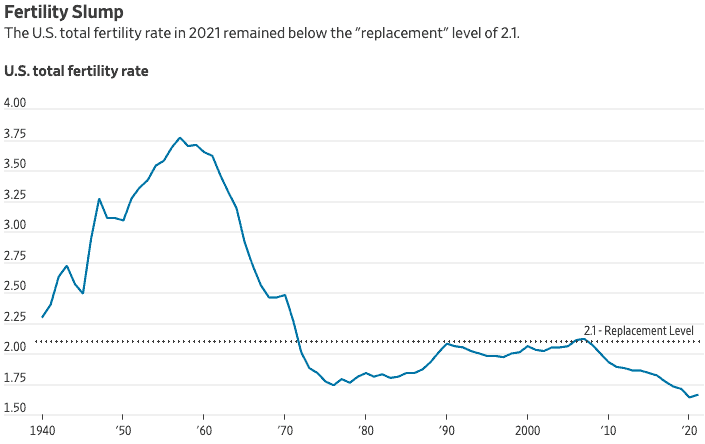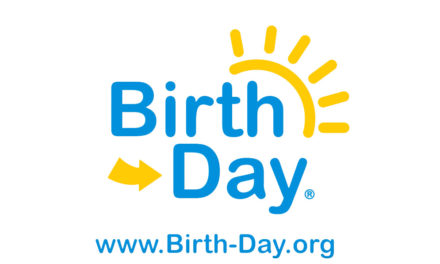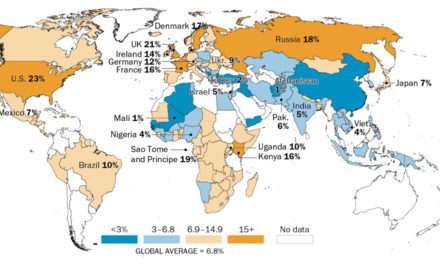The U.S. birth rate increased in 2021 for the first time since 2014, the federal government reported on Tuesday.
The Centers for Disease Control and Prevention’s National Center for Health Statistics (NCHS) reported preliminary data showing that the U.S. birth rate increased 1% in 2021 compared to 2020, the first increase in seven years.
The provisional data showed that there were 3,659,289 births in the U.S. in 2021 – leading the total fertility rate to rise to 1.66 births per woman in 2021, up from 1.64 in 2020.
The “replacement rate,” at which a population replaces itself from one generation to the next without immigration, is 2.1 children per woman in most developed countries.
This means that despite the small increase in the fertility rate last year, the U.S. is still well below the level needed for our population to sustain itself without migration.

Photo Credit: The Wall Street Journal
Phillip Levine, an economics professor at Wellesley College, told The Wall Street Journal, “This minor blip up still leaves us on a long-term trajectory towards lower births.”
Tesla and SpaceX founder Elon Musk has consistently been raising the alarm about the low fertility rate in recent years.
“USA birth rate has been below min sustainable levels for ~50 years,” he tweeted following the NCHS’ newly released numbers. “Contrary to what many think, the richer someone is, the fewer kids they have. I am a rare exception. Most people I know have zero or one kid.”
And it’s not just Elon sounding the alarm.
In their 2019 book Empty Planet: The Shock of Global Population Decline, Canadian researchers Darrell Bricker and John Ibbitson make the startling claim that the end of the world may soon be upon us – and not because of climate change.
They write:
The great defining event of the twenty-first century—one of the great defining events in human history—will occur in three decades, give or take, when the global population starts to decline. Once that decline begins, it will never end. We do not face the challenge of a population bomb, but of a population bust—a relentless, generation-after-generation culling of the human herd [emphasis added].
If our society, or humanity itself, is to survive, human beings must fulfill what God gave as his first command to mankind: “Be fruitful and multiply and fill the earth and subdue it” (Genesis 1:28 ESV).
And as it turns out, one of the key ingredients in predicting the number of children that someone will have is their faith, or lack thereof.
Statistically, religious families have more children than nonreligious ones.
According to the Pew Research Center, black Protestants typically have 2.5 children per woman while evangelical Protestants and Catholics on average have 2.3 children per woman. Atheist women on average only have 1.6 children per woman, while agnostic women have 1.3.
In his book Fertility and Faith, Baylor University professor Philip Jenkins writes, “High-fertility societies, like most of contemporary Africa, tend to be fervent, devout, and religiously enthusiastic. Conversely, the lower the fertility rate, and the smaller the family size, the greater the tendency to detach from organized or institutional religion.”
This means that faith is important, and not just for one’s eternal destiny.
Faith matters to the well-being and continuation of society.
You may not hear that on the evening news, but it’s true, and essential to understand, nonetheless.
Related articles and resources:
Be Countercultural, Embrace Parenthood
How Fertility Drives the Health of Nations
Just 18% of American Households Are Families with Married Parents
Confirmed: The COVID Baby Bust Means the World Is Not Having Enough Babies
COVID-19 Baby Bust Lower Than Projected
The End of the World as We Know It?
Photo from Shutterstock.






